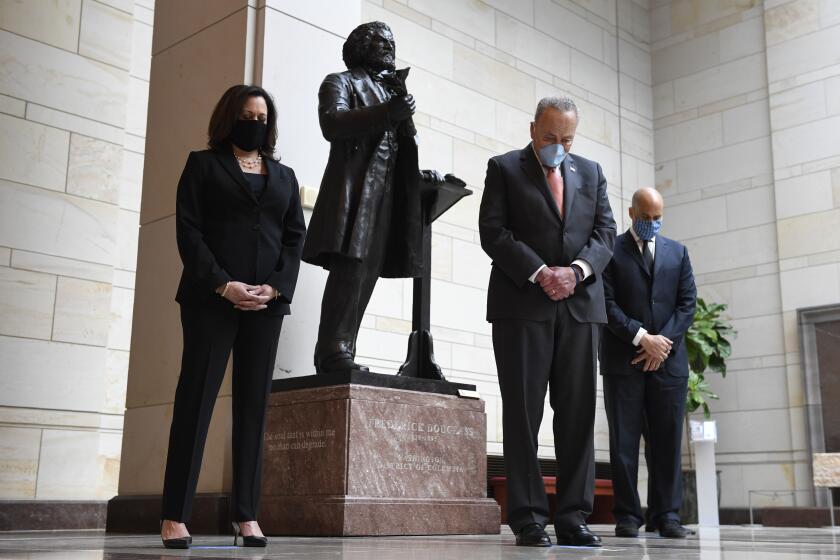Green dollars
Environmental leadership, or growth and opportunity? For three decades, it seemed that California could only have one or the other: Responsible stewardship of our resources coupled with slow growth -- and a resulting shortage of housing and jobs; or continued economic power -- with the degradation brought by traffic and sprawl.
Now the state is finding its way toward a model in which environmentalism and growth complement each other. Lawmakers weighed in with AB 32, the landmark bill to reduce emissions of greenhouse gases. Voters approved infrastructure bonds such as Proposition 1C, which encourages builders to focus on transit corridors or empty or degraded spots in urban areas.
A bill to continue California’s move toward sustainable growth comes before the state Senate Housing and Transportation Committee today. It would reward cities and counties that show they are reducing the number of vehicle miles traveled -- and, consequently, carbon emissions, traffic and sprawl -- even as they grow and provide housing and jobs for residents. AB 842 by Dave Jones (D-Sacramento) is smart legislation and deserves support.
At issue are $850 million of those Proposition 1C funds, which are distributed by the state Department of Housing and Community Development based on criteria such as proximity to transit stops. AB 842 would ensure that the department gives priority to cities and counties that have adopted general plans that will reduce vehicle miles traveled by at least 10%. Our bond money should go to smarter growth that reduces car trips.
The bill would supercharge Proposition 1C, especially in areas such as the deserts of northern Los Angeles County, the Inland Empire and the Central Valley, where cars now idle in rush-hour traffic and sprawl is continuing. Cities and counties that want first crack at bond money for the water, sewer and other public investments to support infill housing would have an additional incentive to align their growth and transportation plans for less road travel.
Some critics worry that older urban areas such as Los Angeles might lose out because it would be harder here to reduce the average number of vehicle miles. Nonsense. Urban areas must continue their investment in transit-oriented development; it can only help to create more incentive for such investment. AB 842 would work for Los Angeles twice: by encouraging continued transit planning and by stemming the growth of automobile traffic into and out of the region from adjacent counties.
More to Read
Get the L.A. Times Politics newsletter
Deeply reported insights into legislation, politics and policy from Sacramento, Washington and beyond. In your inbox three times per week.
You may occasionally receive promotional content from the Los Angeles Times.










